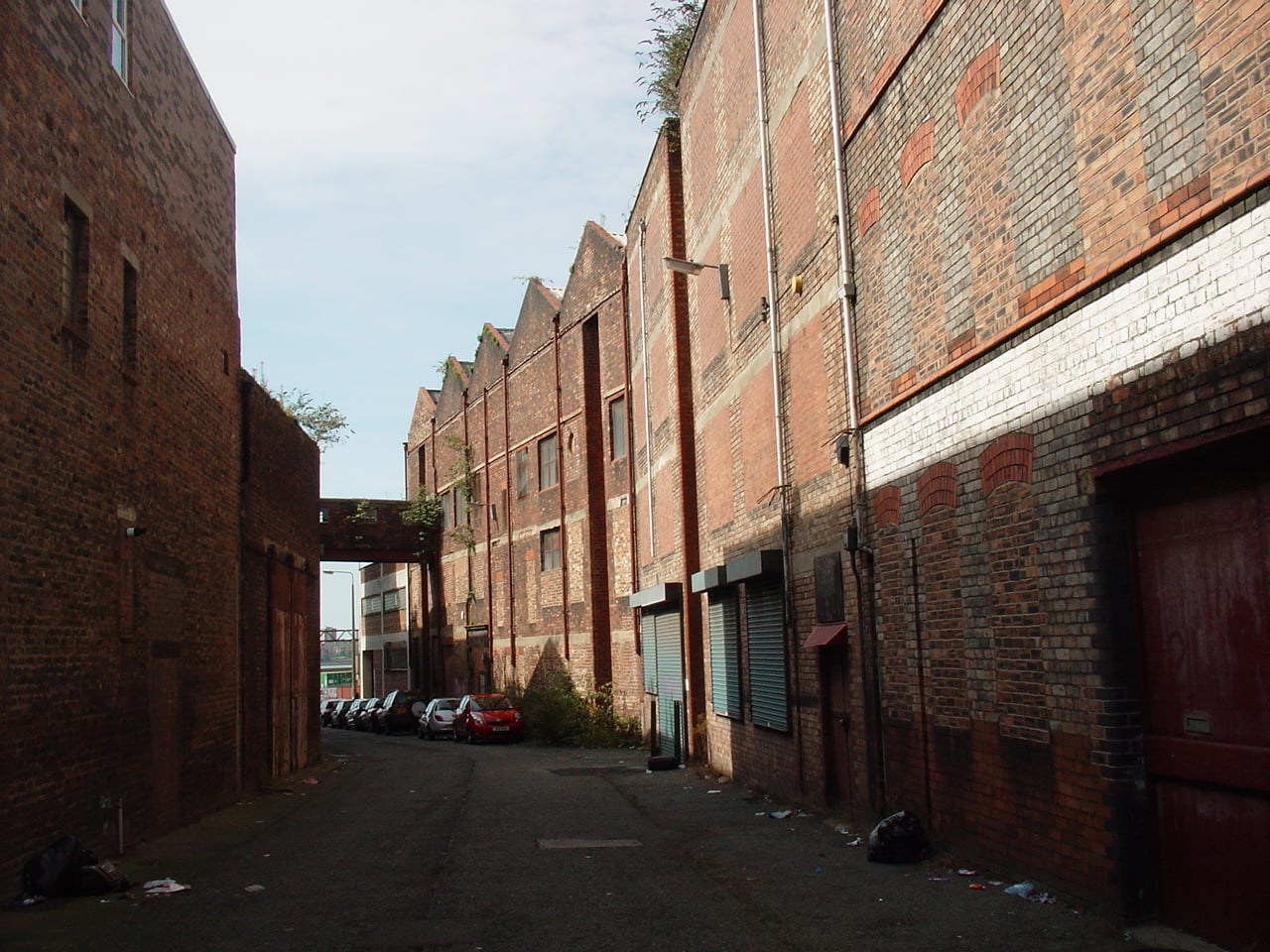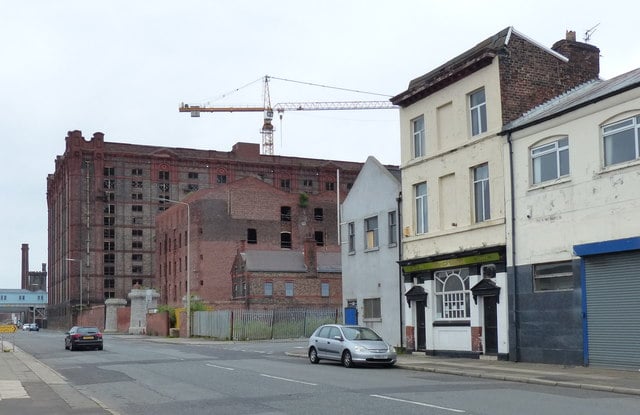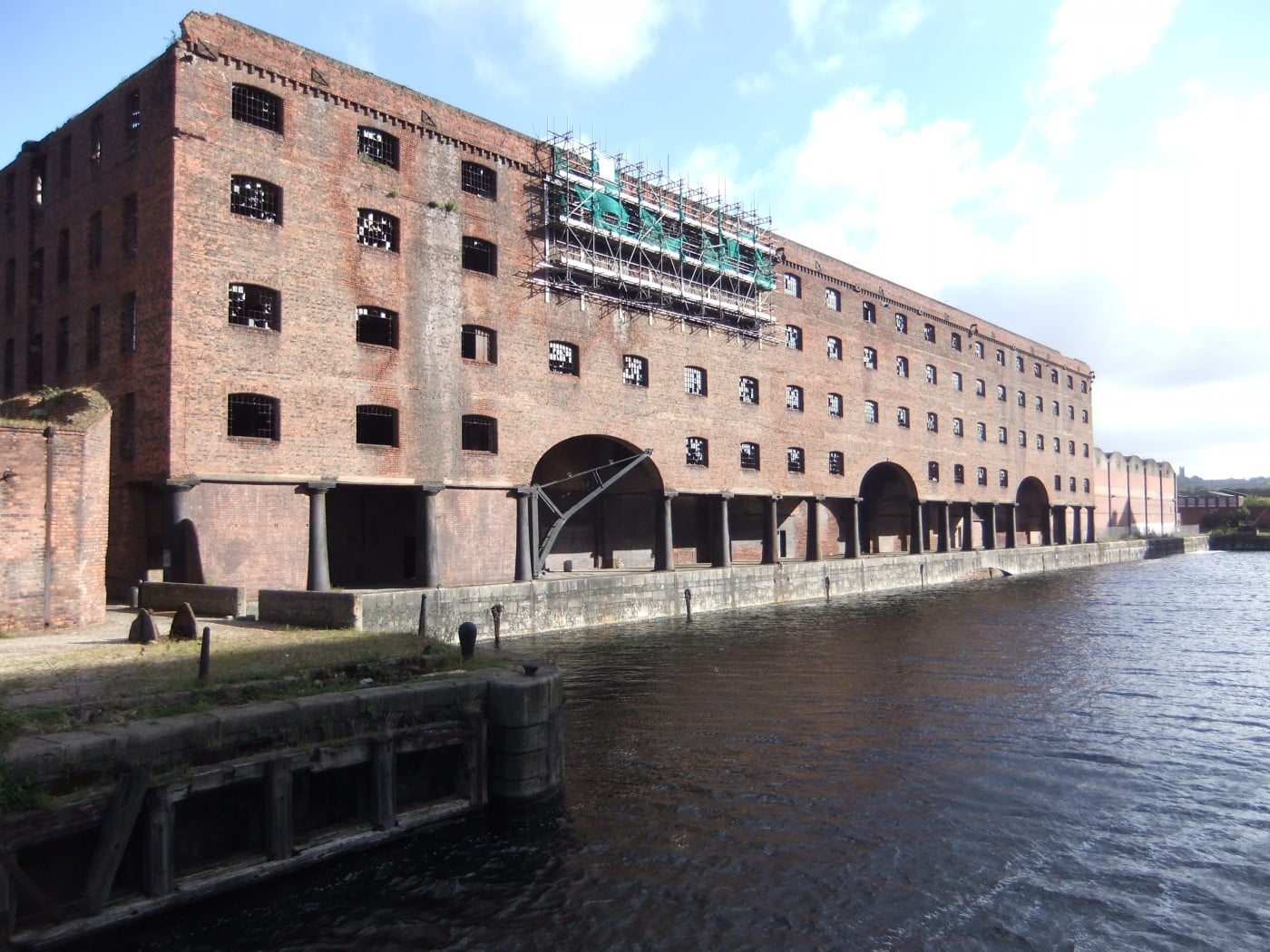
Porter Street, part of the proposed development along with Oil Street, Cotton Street and Saltney Street.
The ‘regeneration’ of Liverpool continues with the consultation on the Ten Streets project, a project partnered by Liverpool City Council, Dublin-based Harcourt Developers and London and Paris-based AWP Architects. There are certain words that are entering the vocabulary of this narrative that should give folk pause for thought: “Commodify”, “Rebranding”, “Gentrification”. Instead of a cultural powerhouse, these words suggest a toothless Disneyland of a city where newcomers are charged sixty quid at the turnstile and given a balloon of John Lennon’s head. It may, however, prove to be a much needed electric shock to counteract the ravages of ideological austerity, instigating Liverpool’s economic costume change from industrial heartland to cultural city state. It is hard to say. What’s not hard to say, though, is that two different visions of Liverpool are emerging in these imagined futures, complete with gulfs and frictions.
Since the Ten Streets project was announced at the old White Star Line building (notorious HQ of Titanic), I have been divided on the issue. Putting Liverpool’s cultural heritage and future centre stage is a welcome and sensible idea in a country too often plagued by a nostalgia-laden and backwards looking Imperial-hangover. The creation of an artistic heartland that embraces the prowess and possibility of this city owes a lot to the notion of “play to your strengths”. The foregrounding of the city’s artistic identity may seem savvy as the country experiences a disconcerting and chaotic identity crisis in which all bets are off.
What’s more, I am sympathetic to the council’s plight. Austerity is biting hard, and the temptation to trade on the culturally evocative name of ‘Liverpool’ understandable. 10,000 sorely needed new houses are included in this development idea and the 2,500 jobs that will be created, partly through creative industries, are nothing to be sniffed at. Certainly I have a vested interest in this, what with me holding an arts degree and the job market being absolute trash at the moment (contact through the editor, all enquiries welcome).

Great Howard Street, which along with Regent Street borders the development.
However: “Gentrification”, a word featuring heavily in the clauses of the Faustian contract. It is a process that makes areas prosperous and liveable by creating an environment in which only certain types of people can prosper and live. The 10,000 homes discussed in the proposal—thankfully not more student accommodation—cater to a certain aspirational class. They will be planned, however, ‘to safeguard [the] commercial and creative identity’ of the site. I understand the council’s plight when it comes to public financing (having been subject to 68% central government cuts since 2010), but without careful consideration these projects can create fenced in communities for an elite subgroup with not much else for the remainders. Liverpool has taken more than her fair share of the Conservative cuts, and I can appreciate the panicked urgency to find a cash injection that is sustainable as quickly as possible. All things considered, it could have been a lot worse. But tempting fate with a socio-political pay day loan is neglecting the significant social responsibilities to the people who call a city home.
Uncritical celebrations of creative, urban revitalisation would do well to remember that the same desk and the same powers that authorise these “innovations” are the ones that have done precious little (or, indeed, nothing at all) to aid those most in need. Where do the homeless, the destitute, the unassisted mentally ill stand in this shiny brave new world that has such bespoke coffee shops and eateries in it? For preference they stand somewhere out of sight, it seems, and as such out of mind.
The gates on Brownlow Hill. The boards outside the old post office on Bold Street. The homeless of Liverpool denied the chance of shelter. Can’t have rough sleepers where they can be seen. What would the aspirational class think? This disregard and open contempt for the city’s most vulnerable citizens and their treatment isn’t social engineering—this is social colonialism. The populace who are of neither use nor ornament to an incoming ideology must be swept neatly under the carpet and forgotten about. As your doctor will tell you, if you have a very serious and very visible problem the best thing to do is ignore it and it’ll go away by itself.

Part of Stanley Dock and now Titanic Hotel, a nearby ‘regeneration’ scheme.
Make no mistake, these projects will be rocket fuel for the economy and this is to be applauded wholeheartedly. But who will benefit from it? Will the money that swells the council’s and new city region’s coffers be used to stimulate jobs for everyone? Homes, or at least shelter, for everyone? The baseline for a society is the citizenry’s need for homes and income. A culture, no matter how splendid, cannot stand or flourish without people to use and benefit from it. Will the benefits of this new cultural powerhouse be available to all? Or purely for the new and gentrified elite?
Enforced gentrification is a tool for shaping a preferred type of person, but here we are being asked to choose between two possible future Liverpools. Should we be the ‘world in one city’ that seeks and stands for justice for all peoples, native and adopted? Or are we a flashy, cool engine room for the enterprises of tomorrow? And why is it, difficulties with bookkeeping notwithstanding, we don’t seem able to be both?
The proof of the pudding is, according to respected authorities, in the eating, so in this early stage it’s wise to reserve judgement until we’ve seen all that is to come. Though if I may conclude with a little speculation: there is a certain subconscious angst in tackling the hubris of prestige versus people and launching your project at the Titanic HQ. I imagine they know a little bit about it there.




Comments